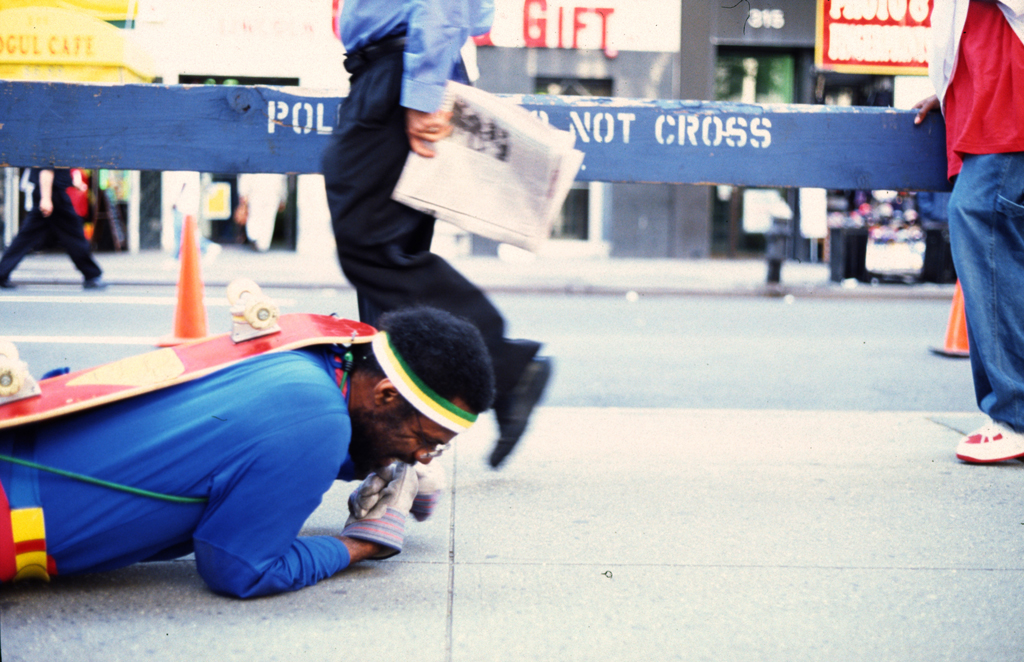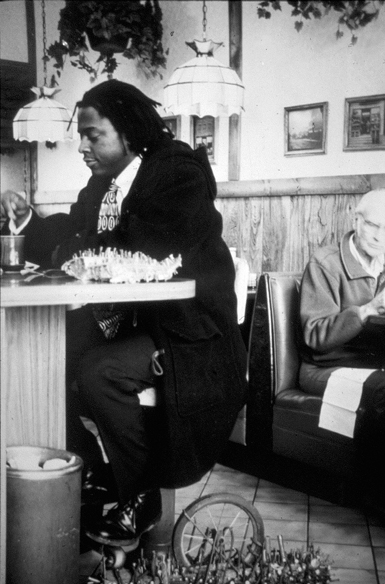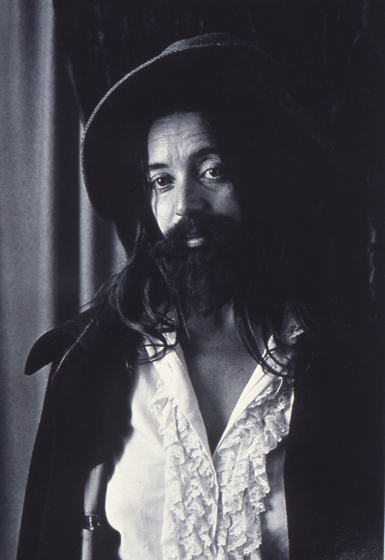City Slickers on the Wild Side
The Barnes Foundation Celebrates the ‘Art of Flânerie’Until now, the contemporary art installations at the Barnes Foundation have been pretty much on the safe side. By contrast, however, this first large group exhibition, organized by the Barnes’s new director and president, Thom Collins, is literally a walk on the wild side, with surprises around every corner.
Entering the gallery, visitors are quickly indoctrinated. Movement through the exhibition, titled “Person of the Crowd: The Contemporary Art of Flânerie,” is largely determined by Jean Shin’s quasi-gestural abstract paintings on found-wood construction barriers, which divide the gallery. They encourage you to walk a somewhat circuitous path around the gallery in the manner a 19th-century flâneur might have moved through a city, experiencing each artwork along the way as a marvelous discovery.
It soon becomes apparent that many contemporary artist-flâneurs, especially those engaged with video and performance, take a more rigorous approach to the streets than, say, Edgar Allan Poe’s stroller in his short story “The Man of the Crowd.” Many of the 50-plus artists in this show have worked so hard to make their art (and usually with little reward, as much of it is ephemeral), they make “studio artists” look like slackers.
Included here are videos of Papo Colo dragging 51 pieces of wood up the West Side Highway; Zhang Huan striding the streets of New York’s Upper East Side in 2002, shortly after the attacks on the World Trade Center, wearing a costume fashioned from raw meat; and Pope.L crawling the entire 22 miles of Broadway in a Superman suit with a skateboard strapped to his back. Jefferson Pinder’s video, Marathon, follows Pinder as he runs naked through a park in Baltimore, picks up and dons articles of clothing that have been left for him as he continues running through the city’s African-American neighborhoods (spoiler alert: he’s fully clothed in a suit and tie by the time he reaches the business district).
The only video that shows an artist enjoying himself or herself is Ivan Cardoso’s experimental film portrait of the Brazilian artist Hélio Oiticica, seen dancing in a parangolé, one of many colorful capes he made from found materials and thought of as mobile sculptures. The competing soundtracks from these and other video works in the exhibition evoke the raucousness of city streets, an effect that must have been part of the show’s design to distract us in the way busy streets do, but the background noise also makes it difficult to concentrate on any single video.
There are quieter works interspersed among the videos, many of them early examples of street-informed sensibilities. Arman’s Small Bourgeois Trash from 1959, an accumulation of household detritus in a wood box, is beguiling and a perfect fit with this show, as is Robert Rauschenberg’s tough assemblage painting of 1961, Second Time Around, and Carolee Schneemann’s erotically charged Beetle Box from the 1960s.
Photographs documenting early 1970s performances are especially flâneur-worthy, particularly Eleanor Antin’s turn as a bearded exiled king, one of her many adopted personas, in The King of Solana Beach, and Vito Acconci’s 1969 Following Piece (which could have inspired another work in this show, Sophie Calle’s 1980 stalkerish Venetian Suite).
The 1980s spawned a new kind of street-influenced art, evidenced here in Keith Haring’s poignant painting, Untitled (Still Alive in ’85), cleverly displayed on the back of one of Jean Shin’s found-wood barriers amid the authentic graffiti scrawled on them and David Wojnarowicz’s photographs of himself in downtown New York wearing a mask printed with Arthur Rimbaud’s face. By contrast, David Hammons’s 1986 acoustic speakers embedded with bottle caps evoke an African-American experience of 1980s Harlem.
As might be expected, the works by the youngest here are less politically motivated than they are wary of their parents’ generation and a world in which one’s physical appearance (selfies!) and desire for privacy on a city’s streets are so at odds. Slater Bradley’s 2009/2011 video Don’t Let me Disappear, portraying a young man prowling the streets of New York with a watchful expression, captures that anxiety disturbingly well.
Copyright 2017, Art Media ARTNEWS, llc. 110 Greene Street, 2nd Fl., New York, N.Y. 10012. All rights reserved.
 The international Art Magazine
The international Art Magazine


